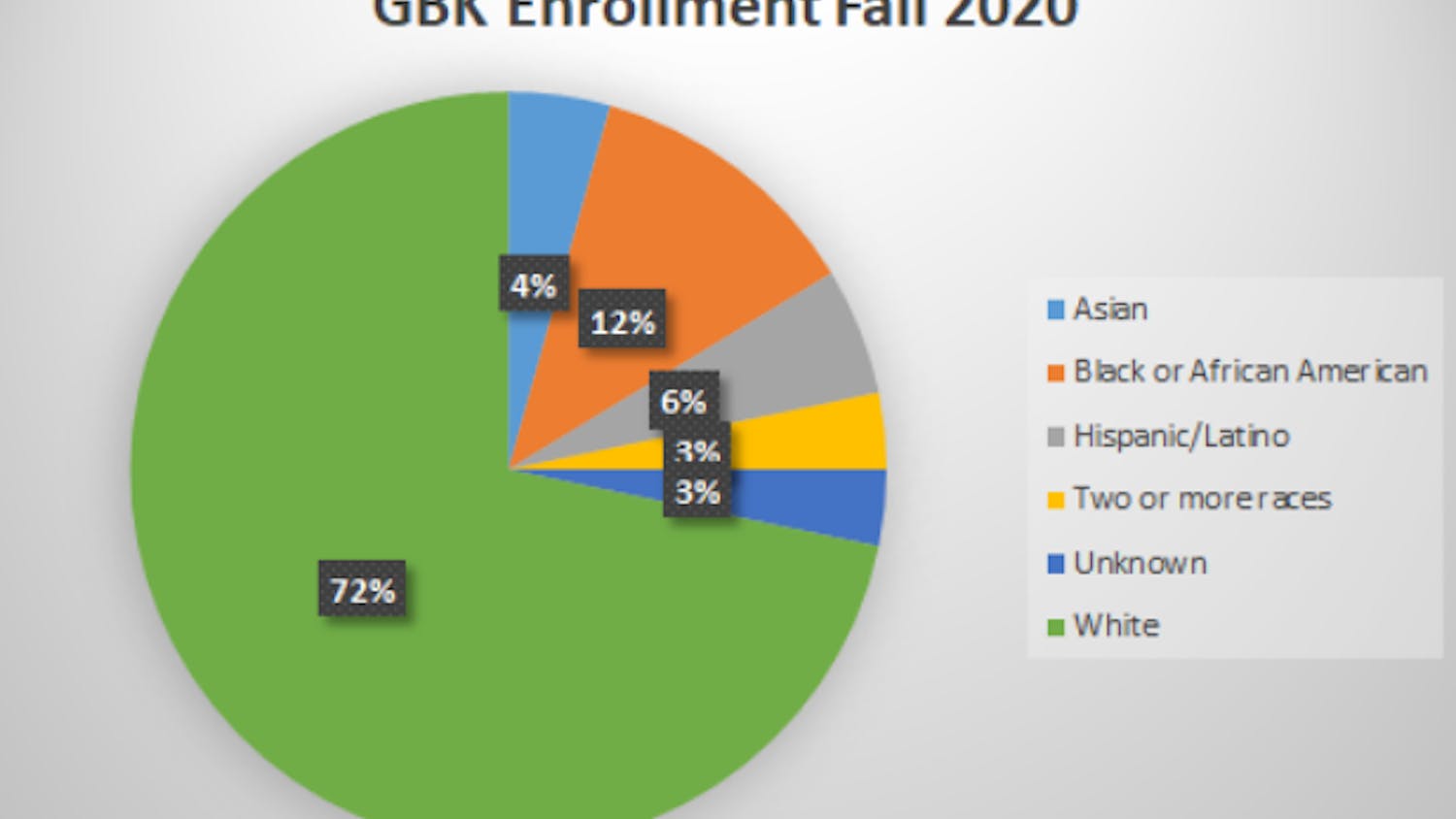In my previous article, I examined the foreign policy stances held by presidential candidate Ron Paul. Because I do not wish to fully lose the attention of this newspaper’s readers—or at least those who put up with my rather unromantic economic infatuations—I will be splitting this article into two parts. This piece will focus on his monetary policies, and the final one will examine his socioeconomic platform.
Central to his monetary policies is Paul’s belief that inflation has reduced purchasing power by 95% since the early 20th century. This notion is incorrect because it ignores a basic principle of moderate inflation in a service-based economy: when prices rise, so do wages.
By a much more accurate metric, purchasing power parity, the United States remains at the top of the rankings. The dollar has more bang for its buck, and we are much more wealthy in real terms than we were at the start of the century.
Built upon the faulty inflation assumption is Paul’s plan to re-implement the gold standard. Unfortunately, the costs of the gold standard outweigh the benefits. The main problem with the standard is that it ties monetary policy to a volatile commodity.
If gold speculation goes one way, so do our interest rates, even if such action would contract credit during a downturn. How do we know this happens? Because 80 years ago, it did.
During the Great Depression, a massive imbalance in gold flows resulted in the exacerbation of the credit crunch. Many countries had to keep interest rates high to stay on the standard, and this further contracted lending. In fact, each country’s recovery did not begin until the respective currencies were taken off of the standard and devalued. Liaquat Ahamed researched this causal relationship in his Pulitzer-winning book, Lords of Finance.
Let’s talk about the alternative to the standard, where the central bank can manipulate interest rates arbitrarily. I’d be full of hot air if I said that the Federal Reserve was great at doing so. Over the past half-century, the Fed has repeatedly made mistakes, resulting in series of investment bubbles and a period of high inflation.
Some research shows that current policy might also bring trouble in the future (Disclaimer: current policy research is also much more controversial, mainly because it involves the future).
Congress shares substantial blame for these mistakes. Representatives typically require high employment to keep their jobs, therefore they both directly and indirectly pressure the Fed (via the dual mandate and nomination process) to increase employment with incredibly blunt tools.
In the long run, I believe Fed officials better than gold in controlling monetary policy. Why? The big difference between gold and the technocrats is that the former is both unpredictable and volatile, while the latter can better itself. In essence, the technocrats leave less to chance.
The Federal Reserve is slowly improving its ability to manipulate interest rates to produce more good results, and less bad ones. The business cycle is on average less volatile partially thanks to countercyclical monetary policy.
In comparison, there is a single tangible benefit to the gold standard—we can theoretically adjust price tags less often thanks to increased long-term price stability. However, the savings in productivity are minor when compared to the disasters gold can wreak upon the economy, such as the Great Depression. The 1930’s credit crunch went well beyond correcting the investment bubble as it prevented the economy growing for many years.
If this monetary policy dilemma sounds too controversial, an alternative solution does exist. One might eliminate the employment component of the Fed’s dual-mandate, thereby reducing the need for over-zealous monetary policy. Instead, the Fed would only target moderate inflation.
To compensate for the loss of more powerful countercyclical policy, the size of automatic stabilizers such as unemployment benefits should be drastically increased in both size and longevity to match those in other successful developed countries such as Germany.
This solution is ideal for two reasons. First, automatic stabilizers are much more precise tools for fighting unemployment than those related to monetary policy—they are less likely to create bubbles in volatile investment sectors.
Second, much of the safety net is taken out of human (read: mistake-prone) control because stabilizers, as the name suggests, are automatic.
Yes, higher unemployment benefits can reduce the incentive to find work, but I’m being realistic. History shows that during downturns, the American people force the government to fill the holes in their bank accounts. If representatives do not cooperate, they are voted out.
If the government is to enact counter-cyclical policies, I’d rather it enact the one with the least number of negative secondary effects.
Moving on, I also take issue with Paul’s other leg of monetary policy. He wants to dissolve the Fed. This is a bad idea for various reasons. (Full disclosure—I have family working for the Federal Reserve. This gives me both insight and an undeniable financial interest in defending the organization.)
Allow me to briefly correct Paul’s various misconceptions about the Fed. First, Paul tends to analogize lending and giving. The Fed loans money, which is later repaid with interest. Some losses do occur, but in comparison to the damage wreaked by a collapsing financial system valued at trillions of dollars, losses in the billions don’t really matter.
While Paul loves to scream about the emergency bank loans, he forgot that we enacted his plan during the Great Depression. That’s right, we let the banks fail in the 1930’s. Andrew Mellon wanted to “purge the rottenness.” Unfortunately, the strategy didn’t exactly teach them a lesson, but it did spark a fiv
e year credit crunch.
Second, when the Fed makes money on loans, the vast majority of profits, around 95%, go back to the United States Treasury (the American people), and the remainder goes to both investment dividends and maintaining an account surplus. These numbers are publicly audited on a regular basis.
Third, the Fed has much stricter conflict-of-interest rules than Congress. I’m certainly not saying that these regulations are perfect, but if conspiracy theorists want to sniff out fraud, they should probably start in Congress, where insider-trading runs rampant.
Fourth, nearly every transaction at the Fed is audited. Every Thursday, the Fed’s balance sheet is publicly released online. Every year, third party accounting firms audit all Fed banks.
The main exception is recent monetary policy decisions. These meeting notes and related financial information are released on a delayed basis—releasing them immediately would essentially put monetary policy directly under the oversight of the Congress, therefore fully politicizing monetary policy.
Let me explain why this is a problem. Representatives often lose elections in times of low unemployment. Fed officials don’t. Those in control of monetary policy are appointed. Representatives have more incentive than these officials to manipulate interest rates for short-term rather than long-term gain. Congressional records prove that the representatives have already shown the will to do so—you should read the things they said to Federal governors over the past 20 years.
With those widespread misconceptions cleared up, I can explain why the Federal Reserve is a necessary component of our financial system. In the 19th and early 20th centuries, when America had no central bank, hundreds of banks failed every year. Self-regulation didn’t work due to systemically flawed incentive systems.
In all, finance, banking, and commerce were much more unreliable. Plans to shut down the Fed are overreactions typically based upon false assumptions.
Younger voters take a lot for granted, such as a central bank. Certain populist monetary stances reflect a stunning ignorance of economic history. Some of these so-called revolutionary ideas were tested less than a century ago. Honestly, considering how much richer Americans became after the central bank was established, I’d say our financial and banking systems have been fantastic, minus some hiccups here and there.
Before wrapping up, I wish to briefly discuss the strengths of Ron Paul, and why I understand his appeal. First, he truly believes every word of his speeches, and it shows during his rallies.
His honest relations with voters attract much admiration and praise. More importantly, unlike Obama or Romney, Paul seems like a person who will drastically change the status quo of uncontrolled entitlements.
I should note that Paul is no Washington outsider. He requested an unusually high sum ($500+ million) of earmarks in the past two years. (For proof, go to the funding requests section on Ron Paul’s congressional website).
To be fair, not requesting earmarks would do little to reduce the earmark budget. He most likely participates only to preserve a platform for his libertarian message.
Indeed, Paul is a pragmatist—he knows that in order to be re-elected, he must represent his constituents. And those Texan voters condemn federal spending while requesting it. (Perhaps politicians are hypocritical because they represent hypocritical people).
Ron Paul’s monetary policies are extremist. Few voters actually support them—business lobbies suspiciously eye Paul whenever he name-drops the Fed. In fairness, I doubt his monetary policies would ever pass in Congress.
Therefore, I understand why some voters feel justified when only supporting him for his fiscal stances and charisma. I’ll discuss his plans for America’s fiscal affairs, along with my final opinion of Paul’s candidacy, in the next issue of The Cluster.
Comments about this column can be sent to sean.r.kennedy@live.mercer.edu.




